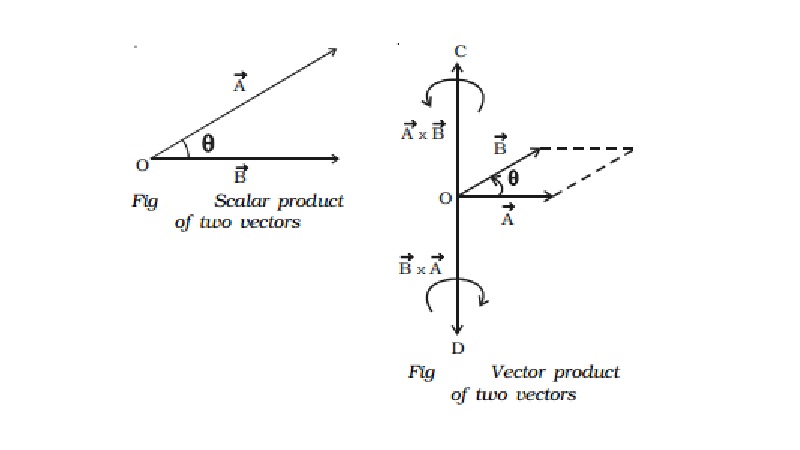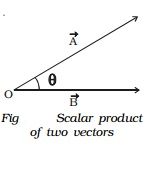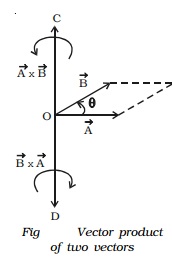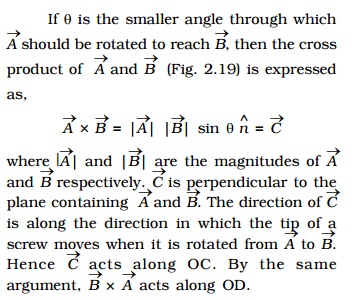Chapter: 11th 12th std standard Class Physics sciense Higher secondary school College Notes
Multiplication of two vectors

Multiplication of two vectors
Multiplication of a vector by another vector does not follow the laws of ordinary algebra. There are two types of vector multiplication
(i) Scalar product and (ii) Vector product.
(i) Scalar product or Dot product of two vectors
If the product of two vectors is a scalar, then it is called scalar product. If Vector A and Vector B are two vectors, then their scalar product is written as Vector A.
Vector B and read as Vector A dot Vector B. Hence scalar product is also called dot product. This is also referred as inner or direct product.
The scalar product of two vectors is a scalar, which is equal to the product of magnitudes of the two vectors and the cosine of the angle between them. The scalar product of two vectors Vector A and Vector B may be expressed as Vector A . Vector B = | Vector A| | Vector B| cos θ where | Vector A| and | Vector B| are the magnitudes of Vector A and Vector B respectively and θ is the angle between Vector A and Vector B as shown in Fig.

(ii) Vector product or Cross product of two vectors

The vector product or cross product of two vectors is a vector whose magnitude is equal to the product of their magnitudes and the sine of the smaller angle between them and the direction is perpendicular to a plane containing the two vectors.

If θ is the smaller angle through which Vector A should be rotated to reach Vector B, then the cross product of Vector A and Vector B (Fig.) is expressed as,

Vector A x Vector B = | Vector A| | Vector B| sin θ ^n = Vector C
where | Vector A| and | Vector B| are the magnitudes of Vector A and Vector
B respectively. Vector C is perpendicular to the plane containing Vector A and Vector B. The direction of Vector C is along the direction in which the tip of a screw moves when it is rotated from Vector A to Vector B. Hence Vector C acts along OC. By the same argument, Vector B ? Vector A acts along OD.
Related Topics